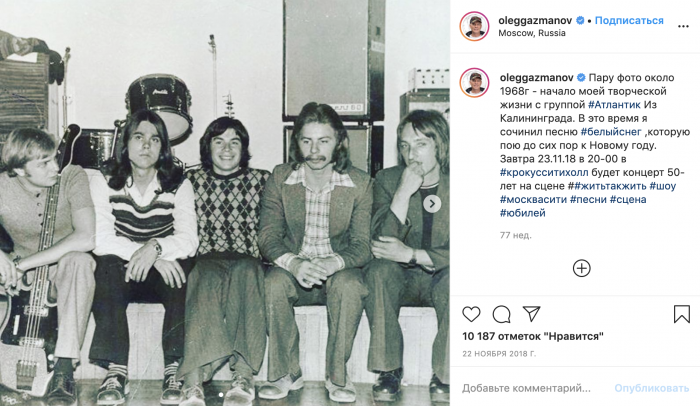Содержание
ACTIONS BY STAFF
Before talking about the guilt the staff must bear, stop and think: the reactor was blown up by the emergency protection!
If Varley drew his conclusion that it was not fair to blame the staff on the basis of the factual material in the Annexes to the report, then he was right. If however one looks at the comments of the INSAG experts themselves, this does not follow at all. In fact, the opposite is more the case.
In 1986, for example, V. Legasov and A. Abagyan did not report the fact that the emergency protection had introduced positive reactivity. Presumably because this was considered unpalatable. The experts write that if they had known, the conclusion would have been different. They found out. And they came to a conclusion: they effectively blamed the staff for dropping the protection rods (see INSAG-7 para 4.1, as quoted above). This sort of thing was not done even at the time when the staff were being most virulently blamed.
In para 6.6 of INSAG-7 the experts write: “Yet INSAG remains of the opinion that critical actions of the operators were most ill-judged.”
Not let us consider a reactor that meets design norms. Which operator actions are ill-judged, or critical? How and why should the operators have compensated for design errors they did not know about?
It was only because there was not legal basis for blaming the staff that V. Legasov and A. Abagyan were forced to resort to making the misleading statements they made in 1986. What is amazing is the promptness with which the INSAG experts grasped these incorrect statements and made their stand as public prosecutor.
Before the whole world, they accused people of violating documents that they themselves have never even seen. Bound by their 1st report, the INSAG experts were forced to keep to the same line in their 2nd.
INSAG-7, like the first report, gives an inaccurate and simply false reading of events and processes, and in the tendentiousness of its exposition turns essentially true statements into false ones. It can have no positive role to play.
Nevertheless, INSAG should be thanked for publishing, as their Annexes, the 1991 Shteinberg Commission report on the accident and the 1991 report by a Working Group of USSR Experts. The factual material in these two Annexes is accurate, and for specialists certainly valuable. But care must be taken in reading the conclusions and assessments. In Annex II, for example, we read: “These characteristics of the reactor plant … made for reliable and effective operation of the RBMK under all regulation conditions and ensured safety for the entire list of design accidents in accordance with the ratified design documentation.” That this is not so does not need saying. But for the sake of completeness:
- The designer missed something off this list (and he’s clean?).
- At the maximum design accident the reactor exploded.
Author Info:
In his role as Chernobyl deputy chief engineer, Anatoly Dyatlov drew up the programme for the fateful turbine generator rundown tests on 26 April 1986. He was in the control room on the night of the accident and sustained 35% burns and a dose of around 600 rem. He was imprisoned in December 1986 and released in October 1990 on health grounds. When this article was published in NEI(September 1995, p17), he was then aged 64, and lived in a flat in Kiev, where the picture above was taken (in July 1995). He always argued that he and the other operators have received an unfair share of the blame relative to the plant designers, who appear to have gone almost entirely unpunished. See also his previous article in NEI (November 1991, p43).
FilesTable 1Table 2External weblinksNuclear Engineering International is not responsible for the content of external internet sites.Focus on Chernobyl
Пол Инс – тренер
- «Маклсфилд Таун» — 2006-2007.
- «Милтон Кинс Донс» — 2007-2008.
- «Блэкберн Роверс» — 2008.
- «Милтон Кинс Донс» — 2009-2010.
- «Ноттс Каунти» — 2010-2011.
- «Блэкпул» — 2013-2014.
В своем последнем клубе (в качестве футболиста) Пол Инс и начал свою тренерскую деятельность. Поначалу он выходил на поле в качестве играющего тренера, но позже занимался исключительно руководством командой.
Сезон 2006-2007 «Маклсфилд Таун» закончил на 16-м месте, но Инса позвали в другой клуб Лиги-2 «Милтон Кинс Донс». Вот его Пол смог вывести в третий дивизион, а так же выиграть с клубом трофей футбольной лиги (аналог Кубка лиги, проводился между командами третьего и четвертого дивизионов. С сезона 2016-2017 в турнире участвуют молодёжные команды клубов АПЛ и Чемпионшипа).
CAUSES OF THE ACCIDENT
The reactor did not meet the requirements of over 30 statutes in the design norms – which was more than enough to cause an explosion.
Or let us look at it another way. Before the protection rods were dropped, the reactor was in the state of an atomic bomb, yet there was not so much as a warning signal. How could the staff have found out what was happening – by smell, or touch?
The accident happened on 26 April because of the combined effect of the emergency protection, with its faulty rod design and the positive fast power coefficient of reactivity. In other situations, each of these factors on its own could have led to an accident.
There is no sense in talking about the control and safety system rods, that is clear enough already.
But something must be said about the power coefficient. First and foremost, there is sense in considering the void effect in connection with N. Laletin’s article (cited above). Second, the RBMK reactor was at its most hazardous at power levels up to roughly 40%, depending on coolant flow rate, because of the large positive fast power coefficient. Variations in coolant density, and in reactivity too by association, are much greater in relation to a unit of power at lower power levels than at levels closer to rated power (see Figure 4). It is not, of course, possible to infer a direct dependence between the reactivity variation and density, but its nature will remain the same.
Before the accident, this was not mentioned in any document about the reactor. It was only after the accident that study of this at low power levels too began – see, for example, the Kurchatov Institute report of September 1990 (accession number 33R/1-1007-90). After all the measures taken to bring the void coefficient of reactivity down to +0.8ßeff, the power coefficient at 200 MW is minus 6 x 10-7ßeff/MW. What was it at a void coefficient of +5 ßeff? Moreover, despite the assertions of the experts, the lower the coolant flow rate, the greater the hazard.
FURTHER COMMENTS ON INSAG-7
The experts are saying, in other words, that a reactor power excursion had to occur, and that the staff either foresaw this, or else, quite by chance, dropped the protection rods immediately before the excursion, and thus either accelerated or even created the conditions for the disaster.
This is something new. Why did the experts not tell us the cause of the preceding power excursion, or at least make a stab at it?
Not one of the commissions have ever found the cause.
I would like to state the following, as a witness to the event: the protection button was pressed in calm circumstances. There is also the evidence of G. Metlenko and A. Kukhar’. Annex I of INSAG-7 says that the commission could find no reasons why the emergency protection rods were dropped. There was actually one reason for dropping the protection rods: a wish to shut down the reactor when work was finished.
Dropping the protection did not “facilitate” the destruction of the reactor, it caused it.
INSAG-7 (para 4.1): “Failure of a fuel channel would have been a cause of a sudden local increase in void fraction as the coolant flashed to steam; this would have led to a local reactivity increase which could have triggered a propagating reactivity effect.”
This reactor had many more “traps” lying in wait for the staff than listed by the experts. Channel rupture (one or two channels) is not among them.
On channel rupture, the amount of water in the core will increase, and it will not matter whether it is in the form of steam or liquid. The water will also cool the graphite. Both mechanisms will lead to a fall in reactivity.
INSAG-7 (para 5.2.1): “The statement was made that there was a proscription on continuous operation of the reactor at power levels below 700 MW(th). This statement was based on incorrect information. There should have been such a proscription, but there was none at the time.”
This reactor “managed to” explode even at 700 MW. There was no safe power level for it. There were only more or less hazardous levels. On the other hand a reactor meeting design norms does not need a restriction of this kind.
There is no technical safety case for power levels over 700 MW. It took on what can only be called a mystical aura (obliging academicians and scientists to make misleading statements before the whole world) solely in order to place blame on the staff.
I set the 700 MW level when I drew up the experimental programme at Chernobyl, and it was based on incidental considerations. At the time the programme was drawn up, it was assumed that we would be checking the main safety valves, for which considerable power was needed – the capacity of a single valve is 725 t/h of steam. Since performance of the turbogenerator rundown programme was placed right at the end (because of having to place most of the mechanisms on reserve power – these are the safety measures which the programme was criticised for lacking), and the reactor was being shutdown for this, in order not to have to wait for a fall in power, the level for the proposed preceding work was entered.
After the unplanned reactor power dip, I took the decision to keep to a rise to 200 MW in view of the adequacy of this, and not because of impossibility. Surely it is obvious that with a positive fast power coefficient there are no limitations on raising power?
Of course it was borne in mind in taking this decision that 200 MW is the usual power level permitted by the regulations.
No-one could say that accident situations and operational data had not been analysed. Following the accident at Leningrad unit 1, for example, a commission (consisting of E. Kunegin et al) issued the following recommendations in 1976:
- Void coefficient to be lowered.
- Design of control and safety system rods to be altered.
- Fast-acting emergency protection to be installed.
The situation was similar when it was discovered that the protection introduced positive reactivity. In December 1984 a new rod design was even prepared. There were other proposals too.
All this, however, was determinedly ignored by the Soviet administration, including some of the experts recently advising the IAEA: Yu. Cherkashov, V. Sidorenko and A. Abagyan. And this, to answer a point raised by James Varley (Editor of NEI) in his May 1993 article on INSAG-7, is why there has been so little benefit from the inclusion of senior officials among the INSAG experts, despite the fact that they had access to equipment, computers, details of reactor characteristics etc.
In view of the fact that the Soviet nuclear administrators chose to ignore obviously hazardous physical characteristics, both built into the design from the start and identified during operation, the RBMK reactor was condemned to explode.
SUBCOOLING OF THE COOLANT
For eight years now the erroneous assumption has been going the rounds that because of the high coolant flow rate, coolant subcooling at the core inlet was reduced, boiling began right at the bottom of the core, and this led to thermohydraulic instability. I pointed out the falsity of this assumption back in 1987, in a letter addressed to the Director General of the International Atomic Energy Agency.
INSAG-7 (para 2.9): “These conditions led to the onset of boiling at or near the bottom of the core.”
According to the Regulations, subcooling is the difference in water temperature in the drum separators and at the core inlet. It certainly does fall with an increase in coolant flow rate, but when this happens the pressure at the core inlet rises, and so also does the boiling temperature (see Figure 1). At low reactor power, boiling begins beyond the core anyway, in the steam-water communication (SWC) line pipework, and the location of boiling moves down gradually as power rises (Figure 1). The greater the flow rate, the higher the starting point for boiling. Specifically, on 26 April (the date of the accident), at a reactor power level of 200MW (power level in core centre channel around 160MW), boiling was beginning right at the top of the 7m high core (see Table 1 and Figure 2).
INSAG-7 (para 5.2.3): “The reactor was operated with boiling of the coolant water in the core and at the same time with little or no subcooling at the pump intakes and at the core inlet. Such a mode of operation in itself could have led to a destructive accident . . .in view of the characteristics of positive reactivity feedback of the RBMK reactor.»
The reactor is operated only in boiling mode, and, according to the regulations, may be operated with minimal or even zero subcooling – see Regulations, Chapter 9. This condition is obligatory, since such operating conditions cannot be avoided in principle – they occur with any rise in power, when the pressure falls in the separators.
The stance taken by the experts here is an interesting one: they explain the destructive effect of positive feedback to the station staff. Fine – the operators will know why they died or were maimed; but it would have been better had the reactor conformed to its design norms. If the reactor explodes under operating conditions it is not possible to avoid, there is only one answer – to prohibit operation. What need is there for explanation?
On 26 April subcooling was roughly 1 degree and pressure was slowly building (see Table 2).
OPERATING REACTIVITY MARGIN
The RBMK reactor designers, and also the IAEA experts along with them, just keep piling onto the operating reactivity margin (ORM) parameter one function after another:
1. The potential for power manoeuvring.
2. Fuel burnup compensation.
These are functions natural to all reactors, and they are described in books and in regulations.
3. Controlling power density over the volume of the reactor.
Also a sort of natural function, on the basis of the “continuous” fuel reloading cycle and large size, although the RBMK is not the only large reactor.
4. A guarantee that the reactor protection operates properly. At the same time the restriction is imposed not on the maximum, which would be natural, but on the minimum (?).
5. Not only is proper operation ensured at a certain operating reactivity margin, but a given rod configuration must continue to be maintained.
This, however, is just a nonsense, and in violation of all design norms. The designers made an obvious error in rod design when the rods introduce reactivity of differing signs when moving in a single direction. Immediately after the accident the rods were acknowledged by everyone, including the reactor designers, as no good. But amazingly the designers were supported by the INSAG experts.
INSAG-7 (para 5.1): “A particular configuration of control and safety rods was necessary for the positive scram to occur. . .”
There are a large number of such “particular configurations”, but the reactivity overshoot occurred solely as a result of the erroneous design of the rods. With a normal design there are no “particular configurations” and cannot be any.
Question: why did the experts feel the need to defend a point that has long since been refuted?
6. And finally, yet another function of ORM: keeping the steam void coefficient of reactivity within set limits.
INSAG-7 (para 4.2): “In the discussion of the scenario, the operators seemed not to be aware of the other reason for the importance of the ORM, which was the extreme effect it could have on the void and power coefficients.»
True, the staff did not know – where could they have got to know about it, if the reactor designers did not know? A. Abagyan, Yu. Cherkashov and others “out of absentmindedness” forgot to mention this when they became aware of it.
Here the alteration to the operating reactivity margin occurs through poisoning of the reactor, in other words the appearance of xenon is compensated by rod withdrawal. Although the influence on the breeding ratio is of the same order, however, the effect on the void coefficient is not identical. And that is by no means obvious.
But let us examine the effect anyway. The regulations give a magnitude for the operating reactivity margin of from 30 to 15 rods. A reduction to 15 rods cannot be blamed on the operators, because in fact there is no other way to operate. The operators overlooked (there was no means of observing) a fall in the operating reactivity margin to eight rods. So, they have 7 rods on their conscience. In an article by N. Laletin (Atomnaya Energiya, 1993, Vol 74, No 3), a change in the operating reactivity margin by 25 rods alters the void effect by 0.5%. Thus seven rods added 0.14%. That was bad, but it was not this addition that played the fatal role, it was the existing void effect of reactivity (2.5-3.0%). You definitely do not have to be a top ranking international expert to understand this.
After the accident, 80 additional absorbers were located in the core. Each additional absorber is equivalent to a control and safety system rod in terms of its influence on the void effect of reactivity. But even 80 was too few, and it was not possible to fit in more, since they are installed in the fuel channels and therefore reduce the number of fuel assemblies. Solely from necessity the operating reactivity margin was raised to 43-48 rods with the fall in the margin restricted to 30 and no less. This margin is not needed for operation, and anyway the operator is forbidden from using it; he has 15 rods at his disposal, as before the accident. A large reactivity compensated by operational systems is a fairly odd way of improving safety. Strange how things are managed with the RBMK reactor. Before the accident it was the only reactor in the world which was especially nuclear-hazardous with a small reactivity margin.
Биография и карьера футболиста
Пол Инс родился в Лондоне. С детства он болел за «Вест Хэм», а в 12-летнем возрасте оказался в академии этого клуба.
«Вест Хэм Юнайтед»
1986-1989
Пройдя все ступени детских и юношеских команд, Инс оказался в заявке «Вест Хэма» на сезон 1986-1987. Сыграл он тогда немного, всего 12 матчей, но уже со следующего года стал постоянно выходить в основе.
Пол оказался универсальный полузащитником. Он здорово оборонялся, владел поставленным ударом и отличной скоростью. А широкую известность он получил 30 ноября 1988 года, когда сделал «дубль» в ворота действующего чемпиона «Ливерпуля» в матче 1/8 финала Кубка лиги (4:1).
По итогам того сезона лондонцы вылетели из Первого дивизиона (так тогда называлась АПЛ), но Пол Инс остался в элите, перейдя в «Манчестер Юнайтед».
«Манчестер Юнайтед»
1989-1995
В Манчестере Алекс Фергюсон только начал строить свою первую команду. Инс был одним из тех, и на кого мог опереться шотландец. Пол сразу стал игроком основы, вместе с капитаном команды Брайаном Робсоном они составляли отличный центр полузащиты.

Однако постепенно из-за травм и возраста роль Робсона в игре становилась все меньше (при этом он оставался лидером раздевалки), и на авансцену вышел Пол Инс. Именно он, наряду с Роем Кином, был главным центральным полузащитником того «Манчестер Юнайтед», что 26 лет спустя вернул чемпионский титул на «Олд Траффорд».
Расставание с Инсом было не самым красивым с точки морали, но вполне логичным с позиций целесообразности. Фергюсон уже тогда понял: что бы оставаться на вершине, нужно постоянно обновлять состав. Ники Батт готов был играть в основе, а тут подоспело предложение из «Интера» на сумму 7,5 миллионов фунтов, вполне приличные по тем временам деньги.
Естественно, что Инс обиделся, тем более что, по словам футболиста, в разговоре с Фергюсоном последний упомянул, что деньги нужны клубу на ремонт базы.
«Интернационале»
1995-1997

В Италии Пол Инс заиграл практически зразу и стал любимцем фанатов «Интера». Вот только мечта его президента Массимо Моратти о возвращении клуба на вершину итальянского футбола оставалась несбыточной. В сезоне 1995-1996 «нерадзурри» стали лишь 7-ми в чемпионате.
Но на следующий год «Интер» взял «бронзу» и дошел до финала Кубка УЕФА. Все налаживалось, в Милан переехал Роналдо, но на этом фоне Пол Инс решил уйти из команды. Решения своего он не изменил, несмотря на личные уговоры со стороны президента клуба.
рассказал Пол Инс в одном из интервью.
«Ливерпуль»
1997-1999
По словам футболиста, переходить в «Ливерпуль» было немного страшно, все-таки это один из главных «врагов» «Манчестер Юнайтед». Но Инс забил уже в первом матче за «красных», а после того, как поразил ворота «Эвертона» в мерсисайдском дерби, болельщики окончательно признали его за своего.
Пол Инс играл на своем уровне (40 матчей, 8 голов в первом сезоне, 41 и 9 – во втором), но команда, состоящая из отличных футболистов, выступала крайне нестабильно, и никак не могла включиться в борьбу за титул.
Ситуацию должен был исправить французский специалист Жерар Улье. Но с ним отношения у Инса не сложились, и он перешел в «Мидлсбро».
Другие клубы
- «Мидлсбро» — 1999-2002.
- «Вулверхэмптон Уондерерс» — 2002-2006.
- «Суиндон Таун» — 2006.
- «Маклсфилд Таун» — 2006-2007.
На момент того перехода Инсу было уже за 30, но он здорово отыграл на протяжении 3-х лет. Пол являлся одним из самых опытных игроков команды и помогал ей удерживаться в середине таблицы.
Перед началом сезона 2002-2003 Инс подписал контракт с «Вулверхэмптоном», выступавшим в Чемпионшипе и сразу помог команде подняться в элитный дивизион. Правда, в АПЛ «волки» провели лишь год, после чего вылетели обратно. Во втором по значимости английском дивизионе Пол Инс играл почти да 40-ка лет.
После этого Инс перешел в клуб четвертого английского дивизиона «Суиндон Таун», но пробыл там пару месяцев и уже в октябре 2006 оказался в «Маклсфилд Таун» (та же Лига-2), где вскоре завершил игровую карьеру.
Сборная Англии
1992-2000
За сборную Англии Пол Инс дебютировал в сентябре 1992 года, сыграл за неё 53 матча, забил два гола. Инс участник двух европейских первенств (1996 и 2000), чемпионата мира 1998 года. На всех этих турнирах он был игроком основы сборной Англии.
Особенно здорово ему удался Евро-1996, проходивший в Англии. Задачей Инса было обеспечить свободу действий Полу Гаскойну, по максимуму освободив того от оборонительной работы. С этой задачей Инс справился блестяще.
Вот только после поражения в полуфинале от немцев по пенальти ему досталась изрядная доля критики за то, что он, с его-то ударом, не подошел к 11-метровой отметке. Хотя пенальтистов в таких случаях назначает тренер.
 Пол уэсли обрадовал поклонников "дневников вампира". он дал им свой реальный номер телефона
Пол уэсли обрадовал поклонников "дневников вампира". он дал им свой реальный номер телефона
 How to fix this webpage is not available error in google chrome
How to fix this webpage is not available error in google chrome Олег газманов
Олег газманов




 Дэвид пол, что произошло с актером-близнецом
Дэвид пол, что произошло с актером-близнецом Правильное правописание: “получиться” или “получится”
Правильное правописание: “получиться” или “получится” Влад бумага(а4): биография, девушка и его ютуб
Влад бумага(а4): биография, девушка и его ютуб